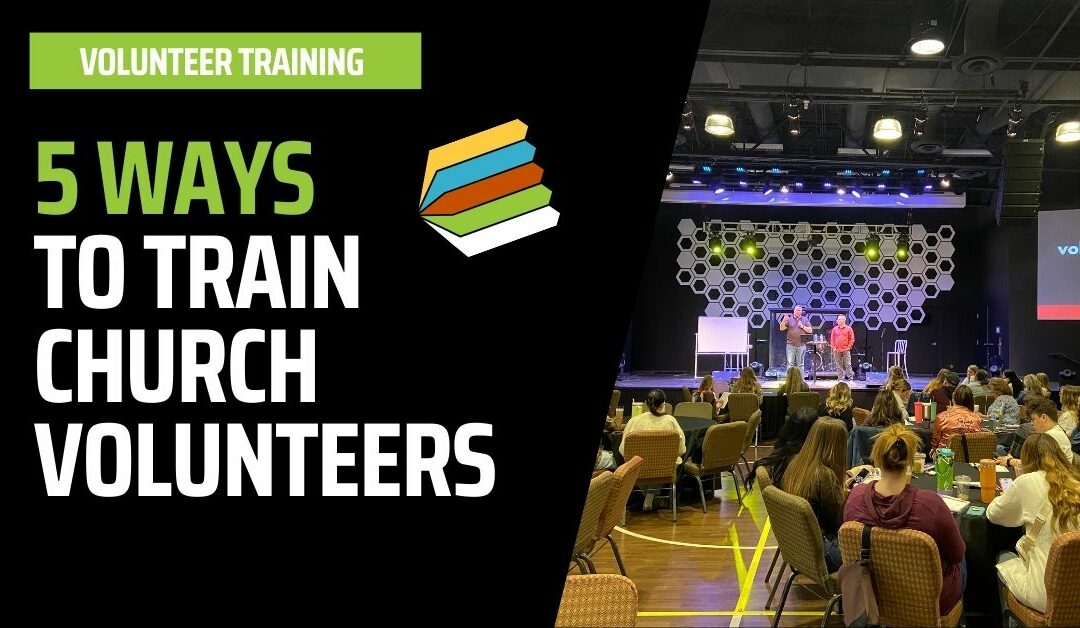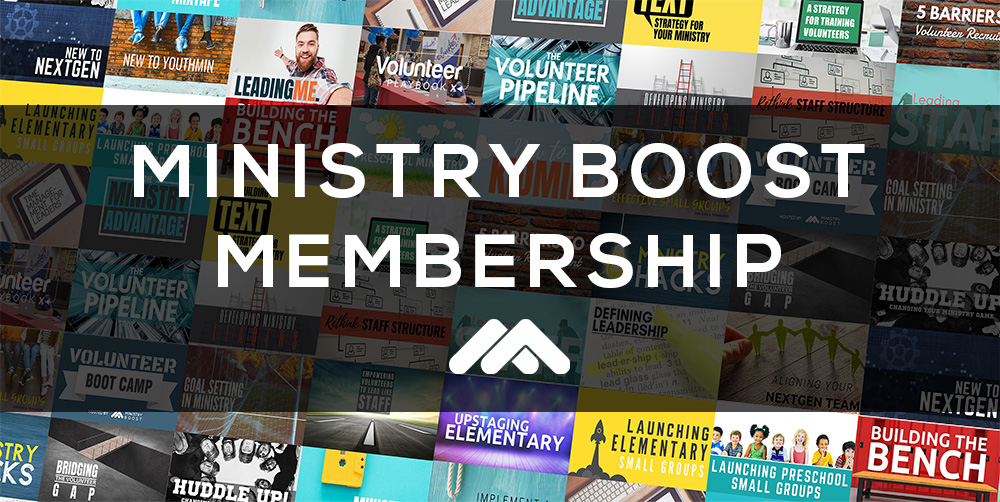When we think about volunteer training in churches or ministries, many of us remember the traditional method where everyone gathers at a scheduled time for a specific event. I recall such events from my own experience growing up, where we might spend an hour or two learning and engaging with the training material. These sessions were effective for many reasons, including fostering a sense of community and providing a shared learning environment. Yet, if this is the only strategy we rely on, we risk missing out on engaging all of our volunteers effectively.
To reach more of our team, it’s essential to diversify our training approaches. One valuable method is the small group setting, often underutilized. Imagine supplementing our traditional large group sessions with smaller, more intimate meetings that last four to eight weeks. This method may dissect a curriculum, such as a book, and allow volunteers to dive deeper into the material. By incorporating varied training formats, we can better address the different schedules, learning styles, and commitments of our volunteers.
Key Takeaways
- Incorporate traditional large group trainings for community building.
- Utilize small group sessions for more personalized training approaches.
- Diversify training methods to engage a broader group of volunteers.
Common Training Formats for Volunteers
Large Group Gatherings
In this setup, we gather everyone together, usually on a scheduled date and time. It might be 10 people or more, but the key is bringing everyone into a communal space. These sessions can last an hour or two, with content presented upfront. This format is excellent for building community, inspiring others, and having fun while learning. Though attendance rates can vary, with higher commitment roles often seeing better turnouts, it's an effective strategy.
Small Group Training
Small group settings offer another approach. Picture a few weeks, say four to eight, dedicated to focused training in a smaller setting. This could be in lieu of regular small group meetings or added to the schedule. The intention is to form stronger relationships and ensure those who may miss a session or two still benefit from the overall program. All it takes is a basic curriculum—or even a book like Lead Small—and some discussion guides.
Online Training Modules
Creating online training modules offers volunteers a flexible option fitting their schedule. These modules can include videos, quizzes, and downloadable resources. Volunteers can complete the training at their own pace, making it convenient for those with busy schedules or who cannot attend in-person sessions.
One-on-One Mentorship
Personal mentorship is another effective training method. Pairing new volunteers with experienced ones allows for hands-on learning and immediate feedback. This method fosters strong mentorship relationships and allows for personalized, in-depth training tailored to individual needs.
On-the-Job Training
On-the-job training integrates learning directly within the volunteer’s role. Volunteers receive guidance and instruction as they perform their duties, enabling them to learn by doing. This method is practical and ensures that volunteers are trained in real-world scenarios they will encounter.
Evaluating Training Session Attendance
When we hold volunteer training sessions, we often wonder how many people will show up. Attendance rates give us a glimpse into the engagement and commitment level of our volunteers. It's common to see different attendance percentages across various ministries.
For instance, our worship arts team usually has a higher turnout because of the high commitment levels of the team members. In contrast, our guest services team, which demands less frequent participation, might have a lower turnout. Observations from our church show that:
- Worship arts team: Around 80% attendance
- Kids ministry: Approximately 60% attendance
- Guest services: About 40% attendance
These numbers help us understand the variety in volunteer engagement. Higher commitment roles often yield better attendance, while roles with less commitment see lower turnout rates.
These trends have also seen some decline over the last few years, making it essential to explore and implement diverse training methods. By mixing different training strategies, we can cater to various engagement levels and improve overall attendance and effectiveness.
Benefits and Drawbacks of Large Group Volunteer Training
Benefits:
- Community Building: Bringing everyone together fosters a sense of community and unity. It's an opportunity for volunteers to connect and bond, which can be particularly inspiring and motivating.
- High Energy: Large gatherings can be fun and uplifting. The collective energy of a large group can make the training engaging and enjoyable.
- Consistency: Sharing the same information with all volunteers at once ensures that everyone is on the same page and receives the same message.
Drawbacks:
- Attendance Issues: It can be challenging to get a high turnout. Often, less than 50-60% of volunteers attend, leading to inconsistent training levels.
- Varying Commitment Levels: Higher commitment roles tend to see better attendance, while roles requiring less commitment may suffer lower turnout.
- One-Size-Fits-All: Not everyone learns effectively in a large group setting. Some people may miss important information or not feel as engaged.
To sum up, while large group training has its strengths, it's important to incorporate a variety of training methods to cater to different needs and ensure broader reach. Mixing up the training approach can help capture the interest of more volunteers and provide a more comprehensive training experience.
Diverse Training Methods to Engage Volunteers
Engaging volunteers effectively involves using a variety of training methods.
1. Large Group Gatherings: This is the traditional method where we gather volunteers on a scheduled day and time. The group might include a dozen people or more. These sessions are beneficial for fostering community and providing inspiration. Splitting into smaller groups during the event can enhance the experience. Although attendance might vary, it's an excellent way to cover essential content.
2. Small Group Sessions: This lesser-used method involves training volunteers in smaller groups over a series of weeks. Unlike regular small groups, these training groups meet specifically for a set period, such as 4-8 weeks. This approach ensures deeper relationships and consistent learning. It's an excellent method for detailed, discussion-based content, and the flexible schedule allows volunteers to catch up if they miss a week.
3. One-on-One Training: Personalized training sessions can be highly effective. By meeting individually with volunteers, we can provide direct mentorship and address specific needs. This approach can significantly boost a volunteer's confidence and competence, ensuring they feel valued and supported.
4. Online Training Modules: Providing online training allows volunteers to learn at their own pace and convenience. These modules can include videos, quizzes, and interactive content. It's a flexible option that works well for volunteers with busy schedules and ensures consistent information delivery.
5. Peer Mentoring: Establishing a peer mentoring program pairs experienced volunteers with newcomers. This method allows for practical, on-the-job training and fosters a sense of community and collaboration. Peer mentoring can lead to a more cohesive team and a more supportive working environment.
By mixing up these methods, we can reach a wider range of volunteers and cater to different learning styles and preferences. The key is to remain flexible and responsive to the needs of our volunteer base, ensuring they feel equipped and empowered to serve effectively.
The Power of Small Group Training
Small group training offers unique advantages that we can't ignore. By gathering in these intimate settings, we promote better relationships and deeper discussions. This format allows for a more personalized experience where volunteers can ask questions and get more detailed answers tailored to their specific roles and challenges.
In addition, small group training provides flexibility. We can arrange it over several weeks, perhaps four to eight, ensuring that even if someone misses a session, they can still catch up. This series can be modeled around essential materials such as the Lead Small book, which outlines key principles for effective small group leadership. This way, volunteers can read a chapter each week and discuss it together, enhancing their learning experience.
Creating a simple discussion guide or content outline is crucial for these sessions. It doesn't have to be a formal curriculum, rather topics that are relevant to our mission and what we want our volunteers to know. We might cover our ministry’s mission, vision, and specific strategies, or even share ten essential dos and don’ts within our ministry. These discussions foster a stronger sense of community and commitment among volunteers.
Lastly, incorporating accessible resources can make the training smoother. For instance, if using a book like Lead Small, we can include discussion questions and summary pages that aid in understanding and reflecting on the material. This method not only makes training less daunting but also ensures that critical knowledge is effectively communicated in a supportive environment.
Methods to Train Small Groups
Crafting Straightforward Teaching Materials
When we think about training volunteers in small groups, it’s crucial to keep the teaching materials simple. There’s no need to buy expensive curricula. We can create content and discussion guides tailored to our needs. For example, in youth ministry, using a book like Lead Small can be hugely beneficial. Participants read a chapter each week and discuss it, creating a comprehensive training regimen with minimal preparation. If a book isn’t suitable, we can summarize key points and develop discussion questions ourselves.
Building Strong Bonds
One of the greatest advantages of small group training is the opportunity to build deeper relationships. Unlike large group settings, small groups allow for more intimate interactions. Over several weeks, volunteers get to know each other better, share experiences, and support one another. This bonding time can strengthen our community and foster a more committed volunteer team.
Utilizing Available Tools
We don't always need to create everything from scratch. Leveraging existing resources like books, manuals, and even video content can save time and ensure high-quality training. For instance, using video series or existing training kits allows us to offer structured and consistent training without the heavy lifting of content creation. This approach can also be more engaging for our volunteers, providing diverse mediums through which they can learn.
Implementing Training Across Your Church or Ministry
One effective way we can train our volunteers is through large group gatherings. These are planned events, with a set date and time, where everyone comes together. While it might only be ten people, the focus is on engaging the entire group at once. This method fosters community, ignites inspiration, and adds an element of fun that's hard to achieve otherwise.
Pros of Large Group Gatherings:
- Community Building: Volunteers feel part of a larger community.
- Inspiration: The energy in the room can motivate and encourage.
- Fun: There's more opportunity for interactive activities.
Despite its benefits, this method alone may not be sufficient, as attendance can vary greatly. Higher commitment roles may see up to 80% attendance, while roles with lower commitment might barely reach 40%.
To diversify our training methods, we should consider small group settings. This often-overlooked approach could involve four to eight weeks of small group meetings focused on training. For example, instead of attending their regular small groups, volunteers might join these specific training groups for a short period. The key is to ensure that these sessions don't disrupt their schedules too much.
Benefits of Small Group Training:
- Flexibility: Multiple weeks allow volunteers to catch up even if they miss a session.
- Stronger Relationships: More intimate settings foster better bonds among volunteers.
To facilitate this, we would need to create a simple curriculum. This doesn’t have to be elaborate or expensive. It could be as straightforward as discussing a book, like Lead Small, over a few weeks. Alternatively, we could develop custom content that aligns with our specific mission and goals.
Example Curriculum Setup:
| Week | Topic | Activity |
|---|---|---|
| Week 1 | Principle 1 of Lead Small | Read and Discuss |
| Week 2 | Principle 2 of Lead Small | Read and Discuss |
| Week 3 | Principle 3 of Lead Small | Read and Discuss |
| Week 4 | Principle 4 of Lead Small | Read and Discuss |
| Week 5 | Principle 5 of Lead Small | Read and Discuss |
This mix of methods can help us reach different volunteers more effectively and ensure that everyone receives the training they need without relying solely on one type of event. We can find a balance that works best for our team.




